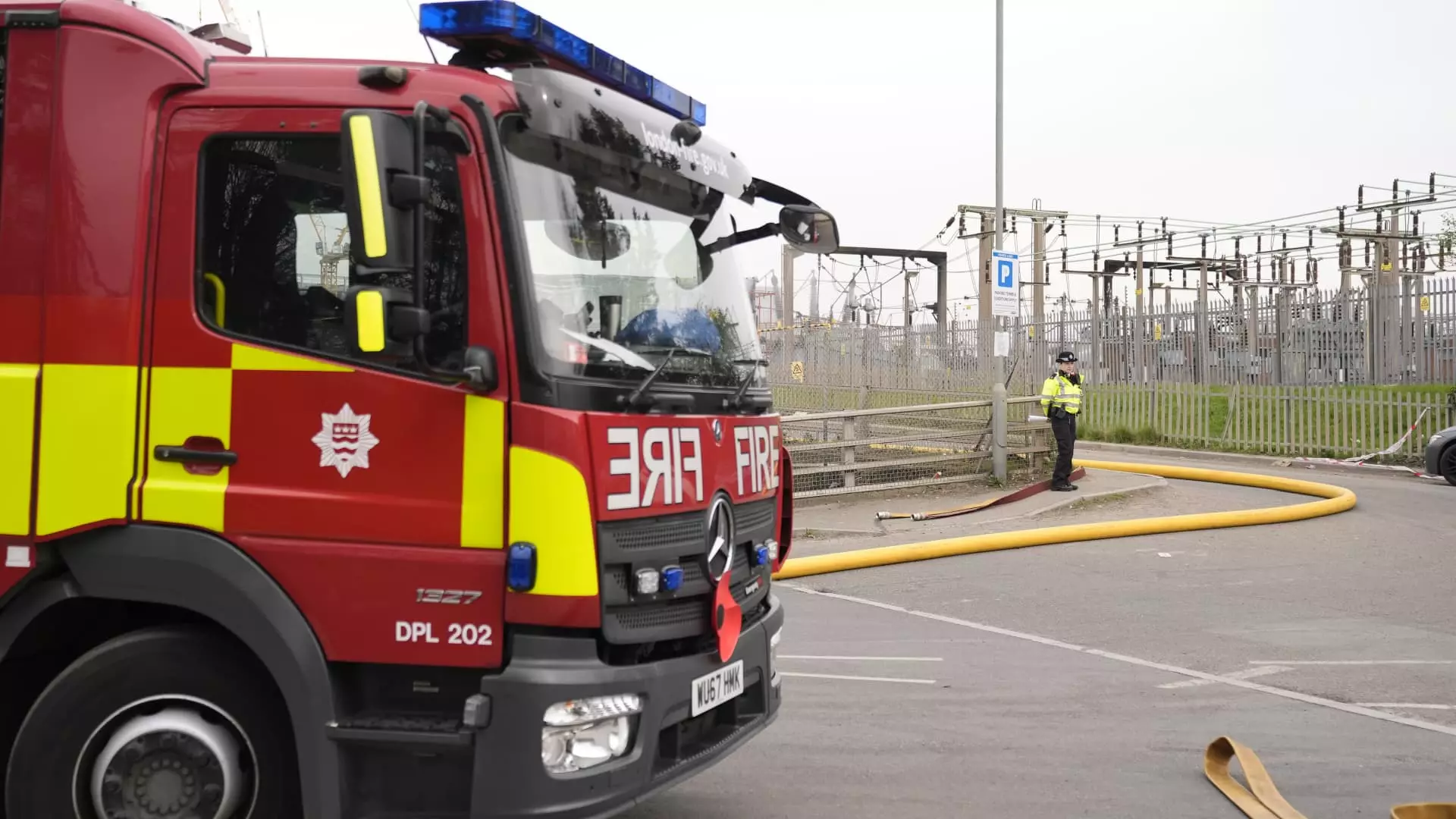The recent closure of London’s Heathrow Airport following a fire at a nearby electricity substation serves as a stark reminder of the aviation industry’s vulnerability. The crisis draws attention not just to Heathrow’s immediate problems but rather to a systemic issue plaguing the entire aviation sector. As Anita Mendiratta, a travel industry expert, aptly pointed out, the speed at which the aviation industry has expanded is simply unmatched by its supporting infrastructure. This imbalance raises pressing questions about how prepared airports are to handle unforeseen emergencies—be they natural disasters, geopolitical tensions, or, in this case, an energy supply disruption.
Mendiratta’s emphasis on resilience should strike a chord with policymakers and industry leaders alike. How can an airport, an essential node in global connectivity, be left vulnerable by its reliance on a “single” power source? The unpreparedness exhibited during the Heathrow incident is not an isolated case but represents a broader risk faced by aviation hubs worldwide. As air traffic continues to surge—surpassing pre-COVID levels—this incident should ignite a vital conversation about the need for robust, diversified energy strategies in airport operations.
The Ripple Effects on the Industry
It’s crucial to recognize that disruptions at major airports like Heathrow can send shockwaves through the global supply chain. Beyond the immediate inconvenience for travelers, as Mendiratta pointed out, over 4,000 tons of cargo pass through Heathrow daily, contributing significantly to the economy. The implications of the recent fire extend deeply into logistics, impacting businesses that depend on timely deliveries. The stalled operations at Heathrow have economic ramifications that ripple far and wide, underscoring the interconnected nature of aviation and global commerce.
Moreover, this emergency raises an unsettling reality about the aviation industry’s growth trajectory. With an expected annual increase in passenger numbers of 3.8% through 2043, it becomes evident that the industry must prioritize not just expansion, but sustainable growth. The failure to address infrastructural shortcomings today could very well lead to larger, more disruptive crises tomorrow. We must ask ourselves: are we equipped to handle the future we are inadvertently speeding toward?
The Accountability Dilemma and Passenger Rights
One of the more disturbing facets of the Heathrow closure is the discussion surrounding passenger compensation. Given that the disruption appears to stem from factors beyond airlines’ control, there is significant ambiguity regarding customers’ options for recourse. This situation exemplifies a troubling trend in the customer care practices of airlines; in times of crisis, the silence surrounding liability seems more pronounced.
Mendiratta’s insights into customer care are pertinent. In a time when consumer expectations for transparency and accountability are at an all-time high, the inability of airlines to promptly address passenger grievances could result in long-term reputational damage. Investors, too, should be wary; the calculations surrounding customer retention are shifting. The focus must now be on how airlines not only manage crises but also maintain trust in their brand during turbulent times.
Infrastructure and the Future of Air Travel
The issue of sustainable infrastructure becomes particularly crucial as we push for decarbonization in aviation. Mendiratta suggested that the shift towards sustainable aviation fuels and the use of green technologies could play a pivotal role in the sector’s future growth. As aviation faces increasing pressure from environmental groups and regulatory bodies, an immediate commitment to sustainable practices must be prioritized. The technological solutions that empower sustainable growth are not just a lofty ideal; they are becoming necessary standards for survival in an increasingly eco-conscious marketplace.
We are at a crossroads: will the lessons learned from the Heathrow incident catalyze genuine investment in robust, diversified infrastructure? Or will this be another case of short-term memory, where convenience and profit margins overshadow long-term adaptability and planning? As stakeholders reflect on the challenges highlighted by the crisis, we must strive for a balanced approach that embraces growth while fortifying our infrastructural backbone.
In an era marked by unpredictability and change, the aviation sector must rise to the occasion, seizing the opportunity to rebuild its foundations for a safer, more resilient future. The challenge is not merely to recover but to evolve and meet the resilience demands of an ever-growing global travel landscape. The question remains: are we ready to take decisive action, or will we continue to fly under the radar until it’s too late?


Leave a Reply